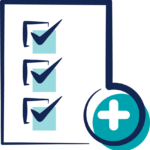While hobbyists have been using unmanned aerial vehicles, better known as drones, for some time, companies are just starting to adapt the technology for their own uses. Small unmanned aircraft systems (SUAS), also known as remotely piloted aircraft systems (RPAS), have rapidly become more common in companies’ commercial efforts.
Despite the fact that drones are readily available, employing them for commercial use is not as simple as just buying one off the shelf. In order to receive the full benefits of utilising drones and to protect your company’s investment, it is critical to understand the regulations associated with commercial drone operations.
Complying with Regulations
Before your company can begin using a drone for commercial use, you must first receive permission from the Civil Aviation Authority (CAA). To receive permission, your company’s drone pilot(s) must possess at least a basic understanding of the applicable aircraft pilot regulations, which should include the Air Navigation Order (ANO) and the Rules of the Air Regulations.
Under Article 166 of the ANO, when operating a drone, a pilot should adhere to the following rules:
- The operation of the aircraft must not endanger anyone or anything
- The ‘remote pilot’ has the responsibility to ensure that the flight can be conducted safely
- A drone must never be flown beyond the normal, unaided ‘line of sight’ of the person operating it. Generally, this is measured as 500 metres horizontally or 122 metres vertically
- Drones weighing more than 7 kilograms, excluding fuel, are subject to additional regulations governing:
- Where they can fly (not in Class A, C, D or E airspace)
- When they can fly (cannot fly within an aerodrome traffic zone during the notified hours of watch of the air traffic unit)
- How high they can fly (cannot fly more than 121 metres high)
If your company’s drone is equipped with a camera, it must also adhere to Article 167 of the ANO, which includes additional rules. These rules state that a drone must not be flown:
- Over or within 150 metres of any congested area
- Over or within 150 metres of an organised open-air assembly of more than 1,000 people
- Within 50 metres of any vessel, vehicle or structure that is not under the control of the person in charge of the aircraft
- Within 50 metres of any person except during take-off or landing whereby the aircraft must not be flown within 30 metres of any person except for the person in charge of the aircraft
However, there are two exceptions to piloting a drone beyond the normal, unaided line of sight:
- Flying a drone from a ‘pilot’s eye’ perspective through the use of an on-board camera, which is known as first-person view (FBV), does not fall under Article 167 of the ANO, if the camera is solely being used to safely control the aircraft. However, if video or photographs are captured in some way and used for other purposes, the CAA considers the flight to have been for data acquisition and Article 167 of the ANO does apply
- If your drone weighs less than 3.5 kilograms and is compliant with Articles 166 and 167, the drone pilot using FBV would not need to maintain direct, unaided visual contact with the aircraft as long as the pilot has a ‘competent observer’ who maintains direct, unaided visual contact








